I’m not sure where you are, dear reader, but in my neighborhood things have gotten very gin-y recently. I can’t seem to turn around without running into a new and exciting gin offering, whether it be a classic martini or something more innovative.
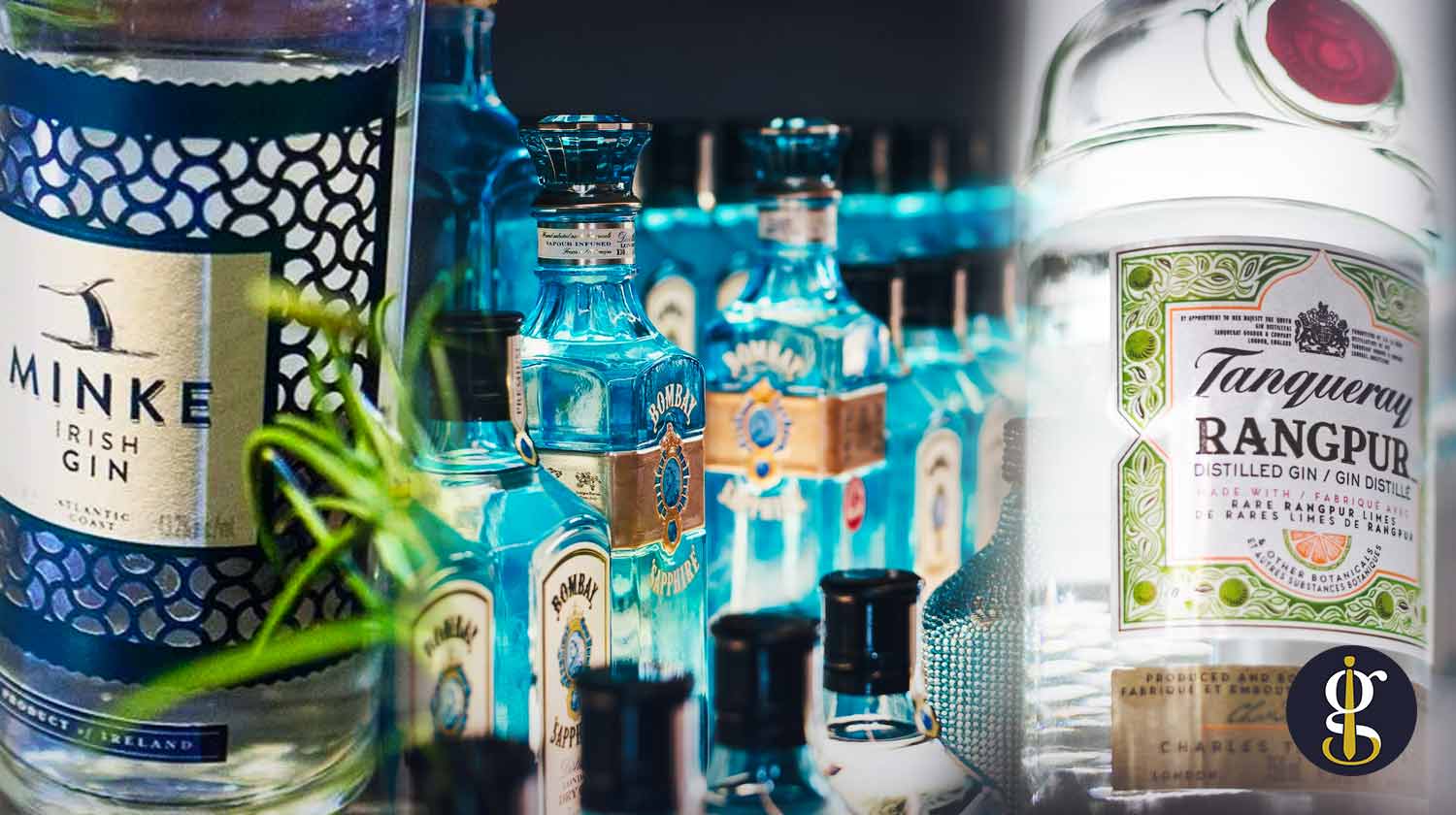
Although a year-round spirit, gin is particularly pleasant, to me, once the weather is not overly frigid. And even more excitingly for me, gin has had a long, convoluted, and scandalous history which enhances every sip of this wonderful concoction.
An Abridged History of Gin
Unlike other spirits we have discussed here before, gin goes back quite a ways further. In case you’ve never thought to Wikipedia simply “gin” before: it might not surprise you to find out it is another product of intrepid Medieval monks, this time from roughly the 11th century and from Italy.
This makes the drink most famous for its English associations Italian in reality and around 1,000 years old! The story, in brief, gets even better from there.
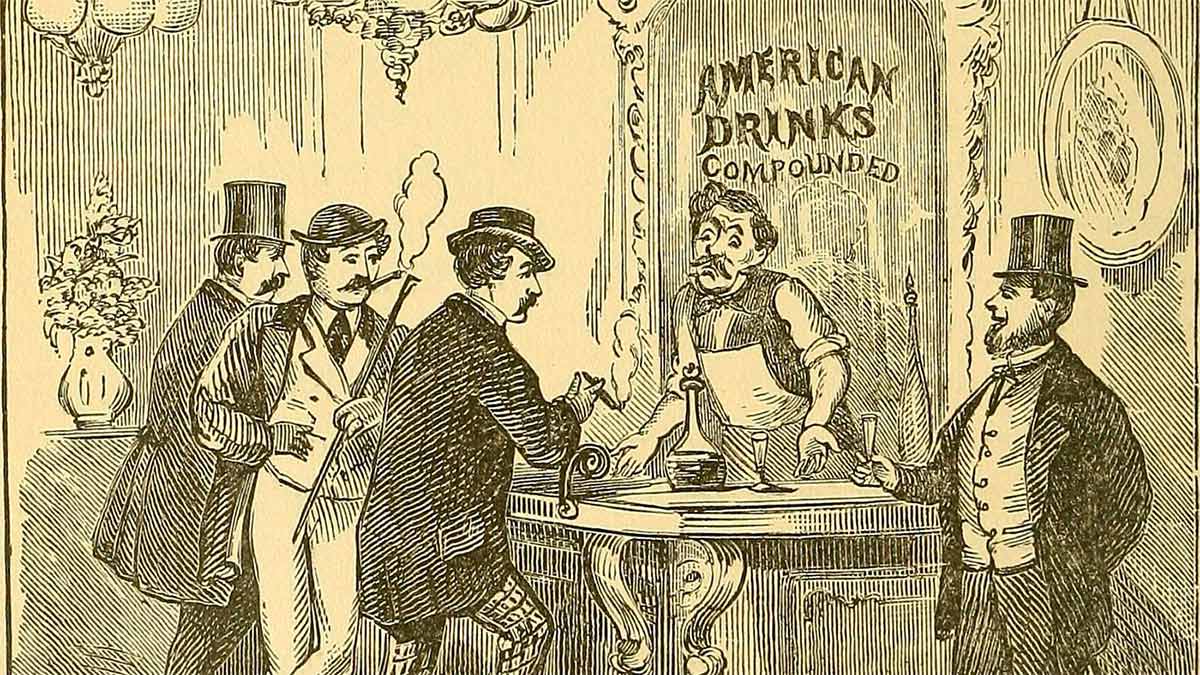
Allegedly distilled and flavored from a neutral grain spirit, think vodka with botanicals, it was billed as a curative by the monks (gin coming from genever, a word for the juniper berries used to flavor it).
Shockingly, it became more popular to drink for enjoyment than for medicine which began its checkered history. Allegedly downed by soldiers in Antwerp in the late 1500s which gave rise to the expression “Dutch courage,” this drink finally made its way to England through the Glorious Revolution (when James II and VII, a Catholic king, was deposed by his daughter Mary II and her husband William III of Orange, Protestants).
Even more excitingly, the government of England shortly thereafter allowed the unlicensed production of gin, which really skyrocketed its popularity versus other spirits such as brandy which faced heavy tariffs.
This set off an explosion of gin among the poorer classes due to its wide availability and caused almost a century of regulation leading to riots, unlicensing again, and finally a balanced system around the end of the 18th century where only licensed gin was available and it was modestly taxed.
We still have various phrases like “gin-soaked,” “gin joint” etc. to describe drunkenness all from this era of social unrest. All this history may seem remote and academic, but the foundation comes into play to give us the different kinds of gins we can find on a shelf today.
» Related: You might enjoy this article on the Best Bourbon Cocktails (That You Can’t Go Wrong With).
4 Types of Gin
There are only a few major types of gin you are likely to encounter in an average shop and only some of these terms, despite the face of it, are regional: American, Canadian, European, and London.
- Gin made in America must be at least 40% ABV, flavored primarily by juniper berries. Pretty simple.
- Canadian gin is a little more picky as it can be either Genever (up to 2% sweetening agents) or the more arid dry or London which can contain no sweetening agents all done through redistillation.
- European gin is a little weaker being only 37.5% minimum ABV and coming in four major categories which are too complicated for the scope of this article but feel free to look them up as they’re the catch-all categories for anything like gin.
- And finally London Dry gin is not necessarily from London at all but must be: 1) derived exclusively from ethanol from agricultural products (distilled grains of some fashion); 2) flavored exclusively from all natural plant materials; 3) essentially no sweetener added; 4) and primarily juniper in flavor. London gin is also a minimum of 37.5% ABV.
Now that you’ve sloughed your way through the exciting world of regulations, let’s talk about some exceptional gins you can gift or enjoy yourself.
The Best Gins Under $50 & 1 Over
And now let’s get into the best gins, all under $50 with one exception.
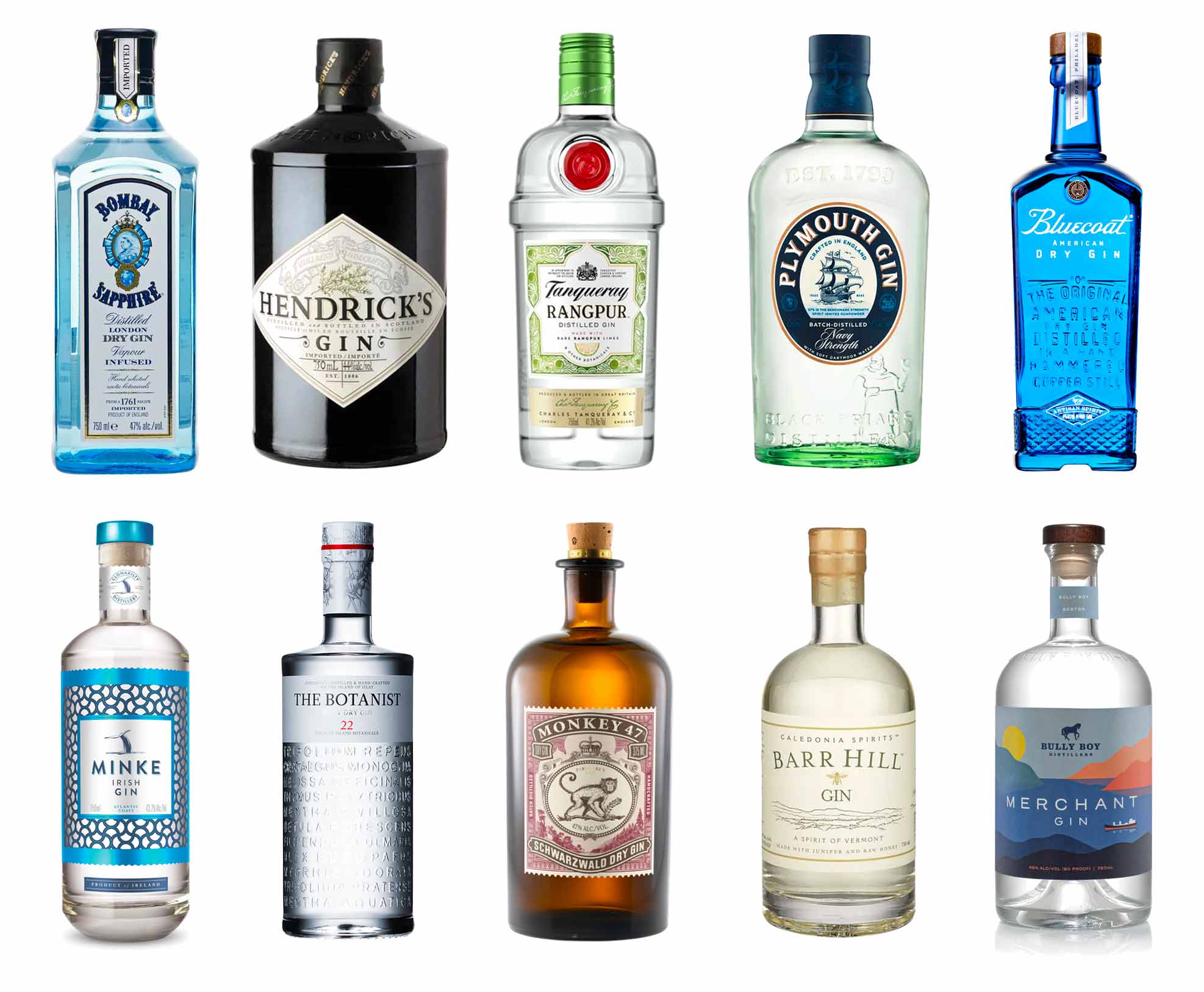
1. Bombay Dry Gin
This is my hands-down, absolute classic, total favorite gin. Not the sapphire, which I find a little too garish and eager to please, the Bombay Original (in a white label and clear bottle to distinguish from its flashier nephew) has simply 8 botanicals and performs most excellently in an ultra-dry martini with a twist.

When I write ultra-dry, I am in the camp of merely looking in the direction of the vermouth while the Bombay is stirred and then poured into a chilled cocktail glass and garnished with a twist of lemon (bonus points if the lemon is wrung first for its drop of oil right into the center of the glass).
Oh what heaven! This universal and stalwart gin has a light and citrus-y palate without the overburdening feeling of having a great many herbs dragged through it.
It comes from their original recipe from 1761 and is bottled at 40% ABV. Buy this anyplace for about $20 for 750ml, use it in anything, truly this is a workhorse of the gin world. If you find a martini a little too spicy and don’t want to have that sort of evening, try it in a French 75, my favorite cocktail, where the simple and dry palate matches a good champagne and lemon juice excellently.
2. Hendrick’s
Another classic! Hendrick’s is actually a Scottish gin and only goes back to 1886, comparatively new! It is famous for having a finishing note of cucumber and rose, an unlikely but successful pairing.

The cucumber, to me, is a very vivid choice and you cannot help but notice it on the mouthfeel of the gin. If you are a cucumber fan, go no further! Pop this in a glass with some ice, dash some quality tonic over it, and garnish with a cucumber – enjoy every sip.
Contrasting it to the Bombay Dry, it has 11 botanicals (enumerated on their website) and is bottled as a stronger 44% ABV. Get it for around $35 anyplace gin is sold.
3. Tanqueray Rangpur
The first of the exciting and unique ones, Tanqueray, already a leader in the gin world, has its Rangpur variant which combines the fun juniper flavoring of London Gin with flavors of the Indian subcontinent.
Named after the Indian lime, rangpur*, this is a lime and mandarin orange forward gin which makes it a beautiful refresher during hot months. If you like limes and the edgier side of citrus, then give this one a shot.

The Tanqueray website recommends it to be served over ice with a quality tonic and I can only agree and say to throw in your best lime as well. Put this all in a large glass and while away the summer hours feeling the illusion that you’re protected against mosquitos.
For, if you were unaware, tonic takes its name from the quinine in it which in former days was a much higher (and more bitter) concentration. Quinine was the only known anti-malarial of its day so gin had a resurgence (you can’t drink tonic on its own!) as a medicinal beverage.
Tanqueray Rangpur is bottled at 41.3% ABV, is available for around $25, and is distilled in Scotland.
*From above, the rangpur lime isn’t actually a lime at all, but is a hybrid between a mandarin orange and citron, and appears more like an orange in color than you might expect, in case you stumble upon one at your local lime-ery.
4. Plymouth Gin, Navy Strength
Both a classic and a comeback kid, Plymouth Navy Strength Gin (it’s written in both formats) was for two centuries part of the Royal Navy’s (UK) standard kit for all newly commissioned vessels. The brand takes its name from the region of England where the distillery is (Plymouth) but it is actually distilled at Black Friars Distillery.
Plymouth Gin goes back to 1793 but is claimed to have been a distillery as far back as 1431 when it operated as a Dominican monastery (hence the name of the distillery!).

Navy strength comes in at a startling 57% ABV and is much more earthy than the London Dry average, but is still in that same camp. It is crisp with some pine, orange blossom, herb bundle, and of course the obligatory juniper notes.
I was first introduced to this gin at a Navy (US) couples’ party where it had been added to the punch. This is a deadly, and delightful, choice and I recommend the same to you. Despite the high ABV, it is very drinkable in all formats and is fun in a glass. I see the higher proof as bringing the citrus and pine forward ahead of the juniper, so don’t feel the need to water this one down.
Plymouth Gin, navy strength is available from about $44 a bottle and continues to be distilled in Plymouth, England.
Quick note: If you’re enjoying this guide on best gin brands under $100, then you’ll probably find my other writing on all things style, self-development & drinks useful. Each week, I share updates, style tips and other things not shared on the blog through my free email newsletter.
To join now, just enter your email address below and click “Get Updates!”
5. Clonakilty Minke Irish Gin
Shoutout to the Irish gin distillers who have leapt onto the scene and really distinguished themselves, not just in gin, over the past decade and change. Arriving at the Emerald Isle (in a glass), you will be immediately struck by how the botanicals of the distillery really are what changes the glass.
Hitherto now, most of the gins have been from a similar (and let’s be honest, the spiritual homeland of gin) region so the vibe has been the same.
The Minke Irish Gin, named after the whale which roams around Ireland and graces the label, is the real deal. Distilled from whey harvested from their ninth generation family farm, like everyone has, they combine that with native Rock Samphire which is harvested by hand and only when in season.
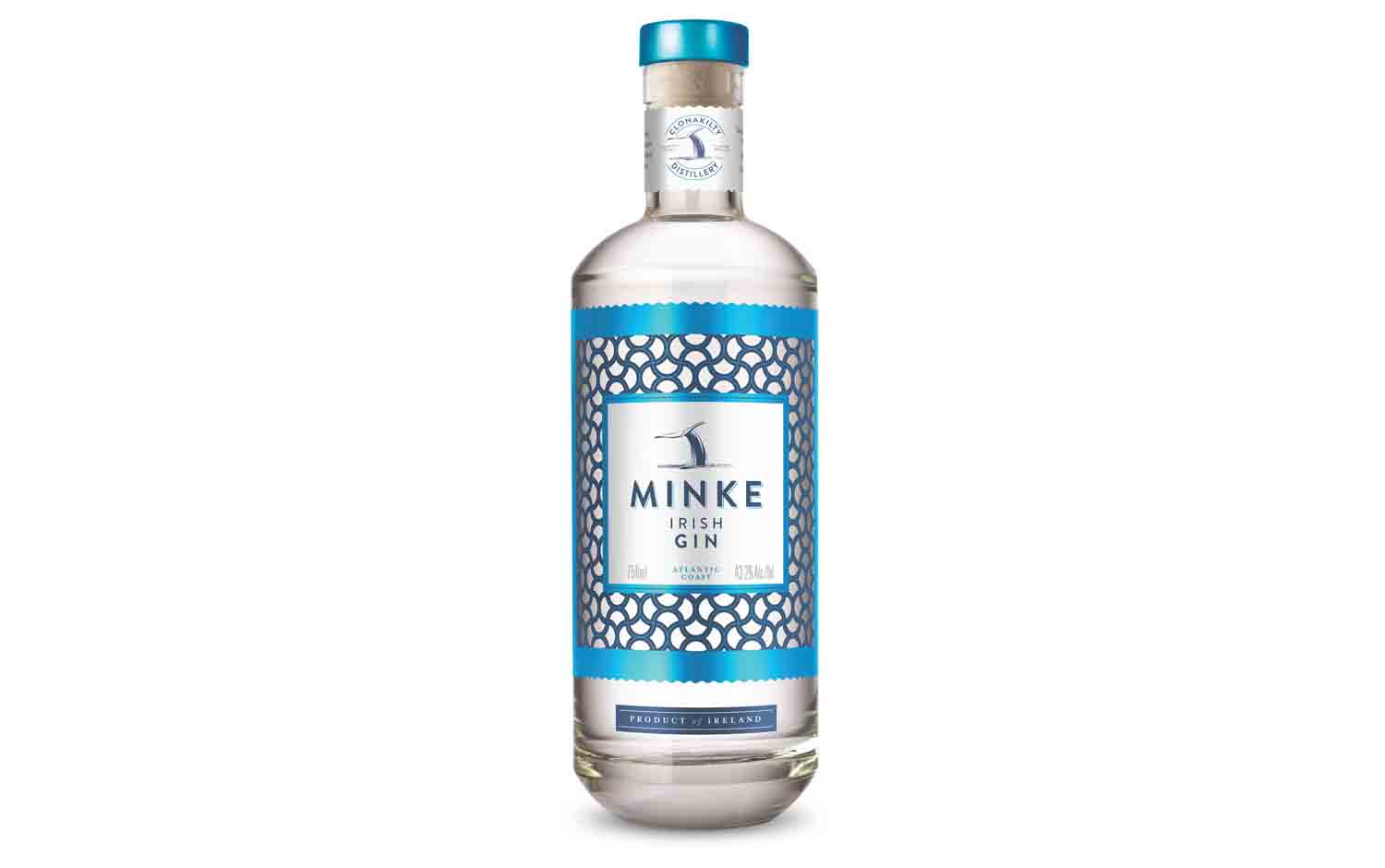
The Rock Samphire grows on the very same coastline where the Minke whale roams, so it is a marriage of both aesthetics and flavor. The palate is fresh, crisp, and the Rock Samphire has a fennel (licorice) like flavor, in case you’ve never heard of it (like I hadn’t before sampling this gin!).
The whey as a base grain gives it a toothier flavor than most gins and it stands up quite well to any citrus or even, if you’re adventurous, to something like mint or jalapeno.
It is bottled at 43.2% ABV and can be bought for about $38 a bottle.
» Related: You might like this guide on Jack Daniel’s vs Jim Beam vs Johnnie Walker.
6. The Botanist Islay Dry Gin
I couldn’t resist putting The Botanist Islay Dry Gin on there – as probably none of you know, I have a deep affection for Islay, an island in Scotland and the source of all of my favorite scotches. To find a gin from this region – I thought I’d come to heaven early without realizing! (It remains the only gin from Islay).
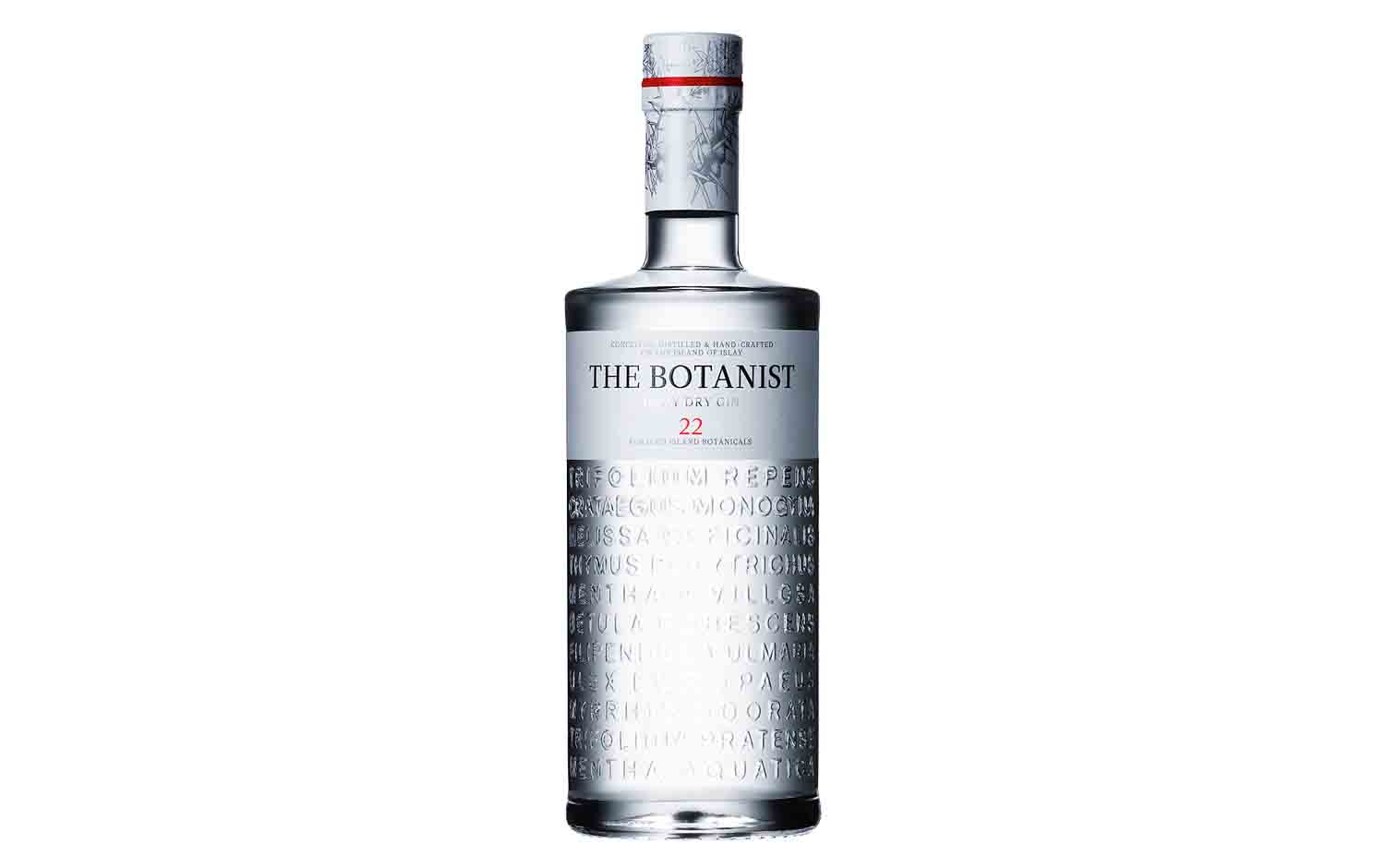
It is made with 22 botanicals, all locally foraged, including the juniper as well as more unique flavorings like heather, mint, and thyme. According to their website, these can only be gathered while it is dry – a very challenging thing on Islay!
The flavor is smooth, not too heavy on the spicy coriander side, with a minty freshness and almost fruit-like aftertaste. It pairs well with most things and makes a great martini or even a creative cocktail with fruit.
It is bottled at 46% ABV from the Bruichladdich distillery in Scotland and can be had for around $40 a bottle.
7. Monkey 47, Distiller’s Cut 2021

Although I hesitate to recommend anything that is produced for only one year, this is also a sampling of a yearly offering that Monkey 47 does, so fret not if it is unavailable, I’ll cover this one specifically but also the line in general.
Monkey 47, Distiller’s Cut 2021 was an unusually good year. It had spicy top notes with plenty of lemon but excitingly a bergamot nose – like having an earl grey tea if the tea was cold and actually gin. However, Monkey 47 is always a good choice, outside of the distillers cut line, as it has a unique botanical profile.
It is distilled in the black forest of Germany which gives rise to its incredible 47 hand-picked botanicals. The distiller’s cut is the same thing with a 48th added annually to spin it in a fun direction.
Monkey 47 is on the higher end of the price scale with the distillers cut coming in at around $80 for a half bottle but the regular Schwarzwald Gin is a more reasonable $50 and is bottled at 47% ABV.
8. Bluecoat Gin
Finally, we turn to American gins for our final three. Bluecoat bills itself as the original American gin, and comes from 2006 – goes to show how long it took us to get into the game. It is distilled in Philadelphia and was an early leader of the gin renaissance taking place around the world at that time.
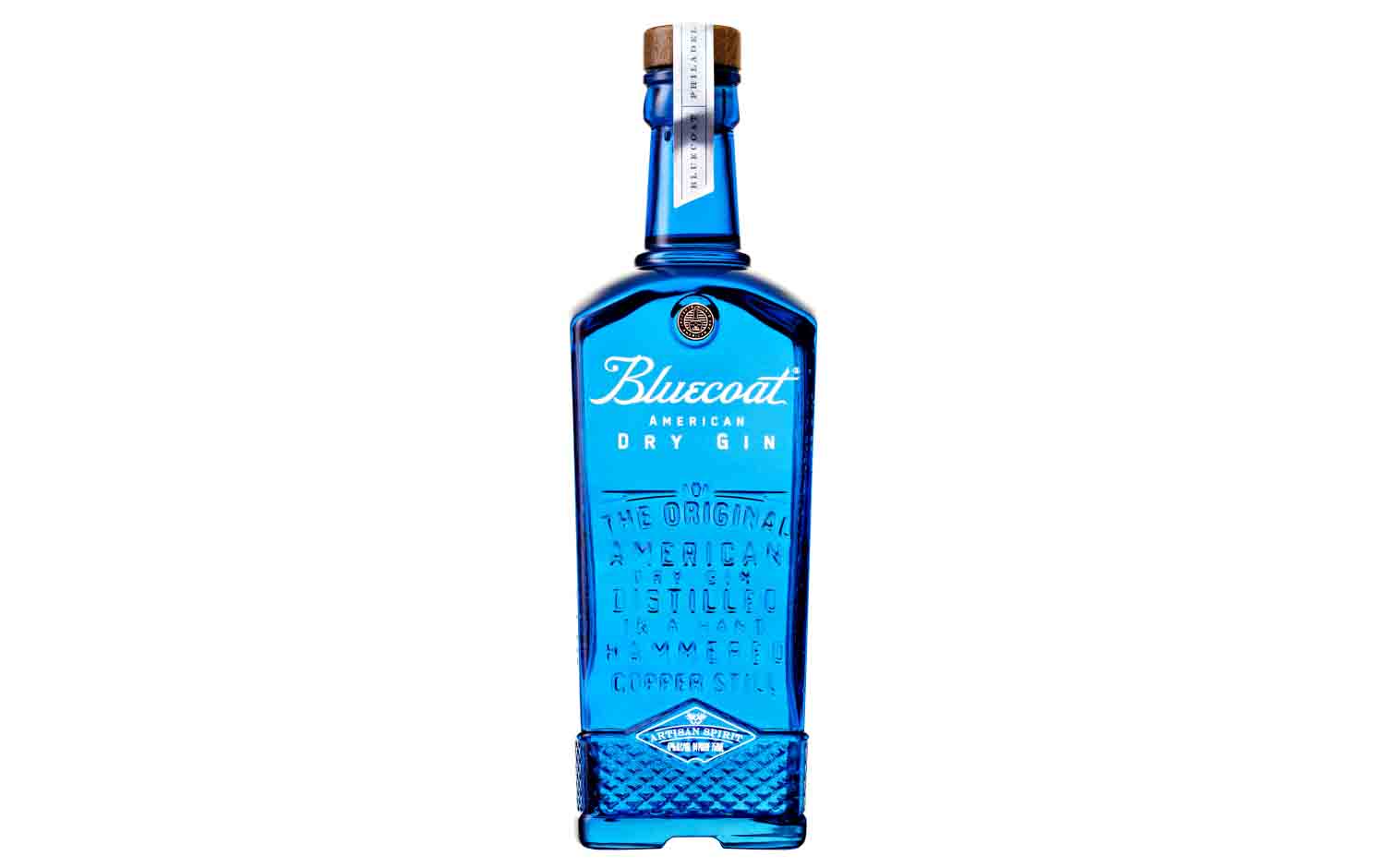
When it launched, it was famously citrus forward featuring bright and a little bitter notes of Meyer lemons and other citrus, but in the intervening years, has become a lot less cutting edge than it was.
In some ways this might make it seem dated, but I encourage you instead to think of it as the original, visionary American option which was leading the way (not just with a funny name) to combat the dominance of UK gin.
It is bottled at 47% ABV and can be had for about $28 a bottle. I would recommend it in a vesper or any occasion where citrus is desired.
9. Barr Hill Gin
I knew I couldn’t get through a list without touching on Barr Hill and here we are. I remember a day where all the gin on the shelves was some variety of London Dry and then one day a bartender told me to try this.
Hailing from Barr Hill in Greensboro, Vermont, this distillery began in 2011 with the unlikely combination of a distiller and a beekeeper. According to their website, in the little more than a decade since, they have become America’s most awarded gin, and they certainly deserve it.
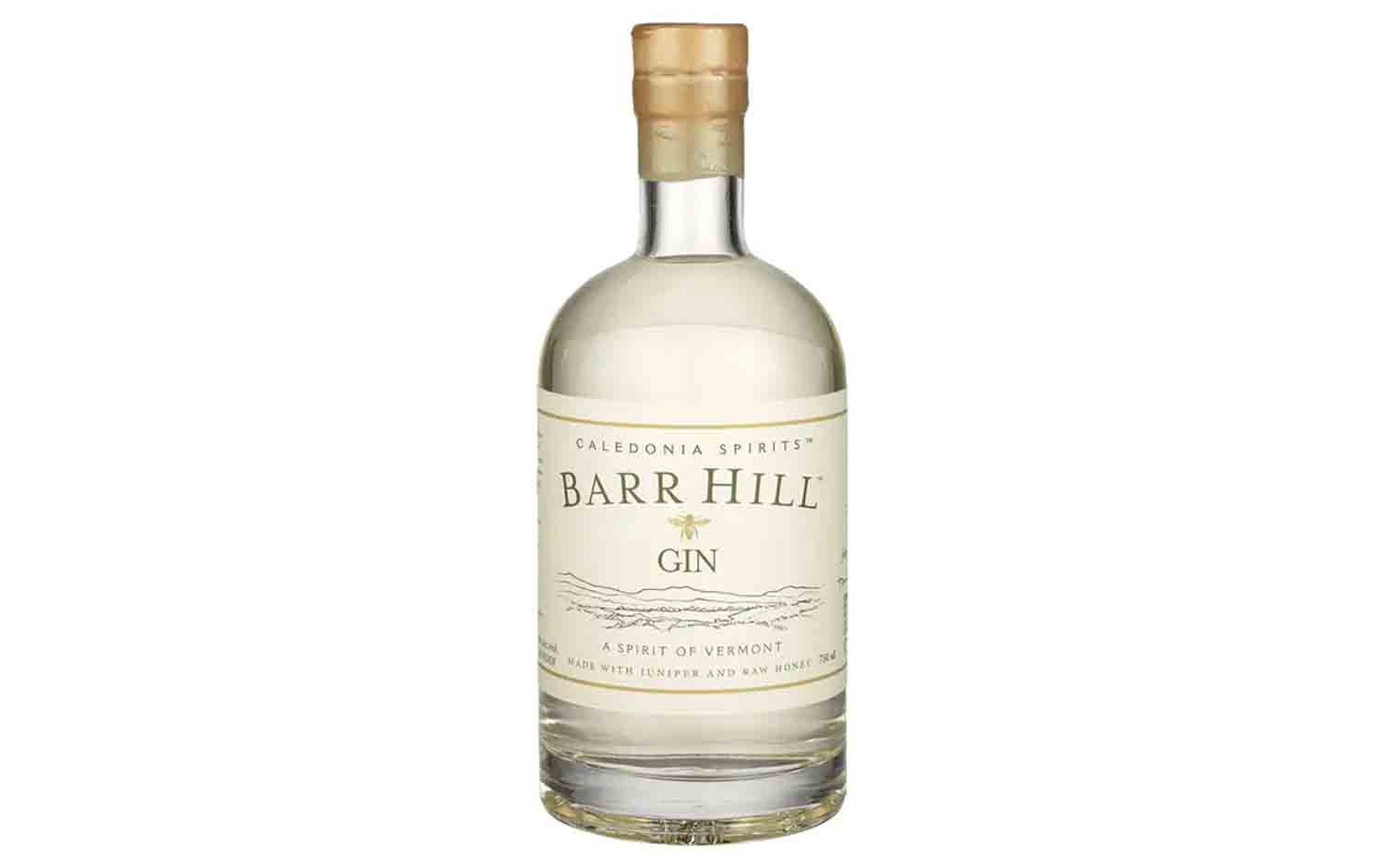
Their most unique trait is that the only botanical used is juniper berries. This is a huge contrast to gins like the 47 we just talked about. Rather, they use raw Vermont honey that they raise and let the botanical characteristics of what the bees gather in the honey to flavor their gin.
It should come as no surprise that the taste of this is very smooth, creamy, and soft given the heavy honey content. Definitely if you are a gin novice or are unsure if you like it, start here and take it as a sweet introduction to gin.
It is bottled at 45% ABV and can be found for about $35 a bottle.
10. Bully Boy Merchant Gin
Another American gin founded in 2011, this one comes from the (a?) cradle of American independence: Boston. Started by two brothers who vastly underestimated the popularity of what they were producing, Bully Boy distillers (who make a number of spirits) came out with my favorite of their offering: the Merchant Gin.
Their goal was to take the best of the world’s botanicals and infuse them in one distillate to represent the far reaching, exotic merchants who sailed into Boston’s harbor.
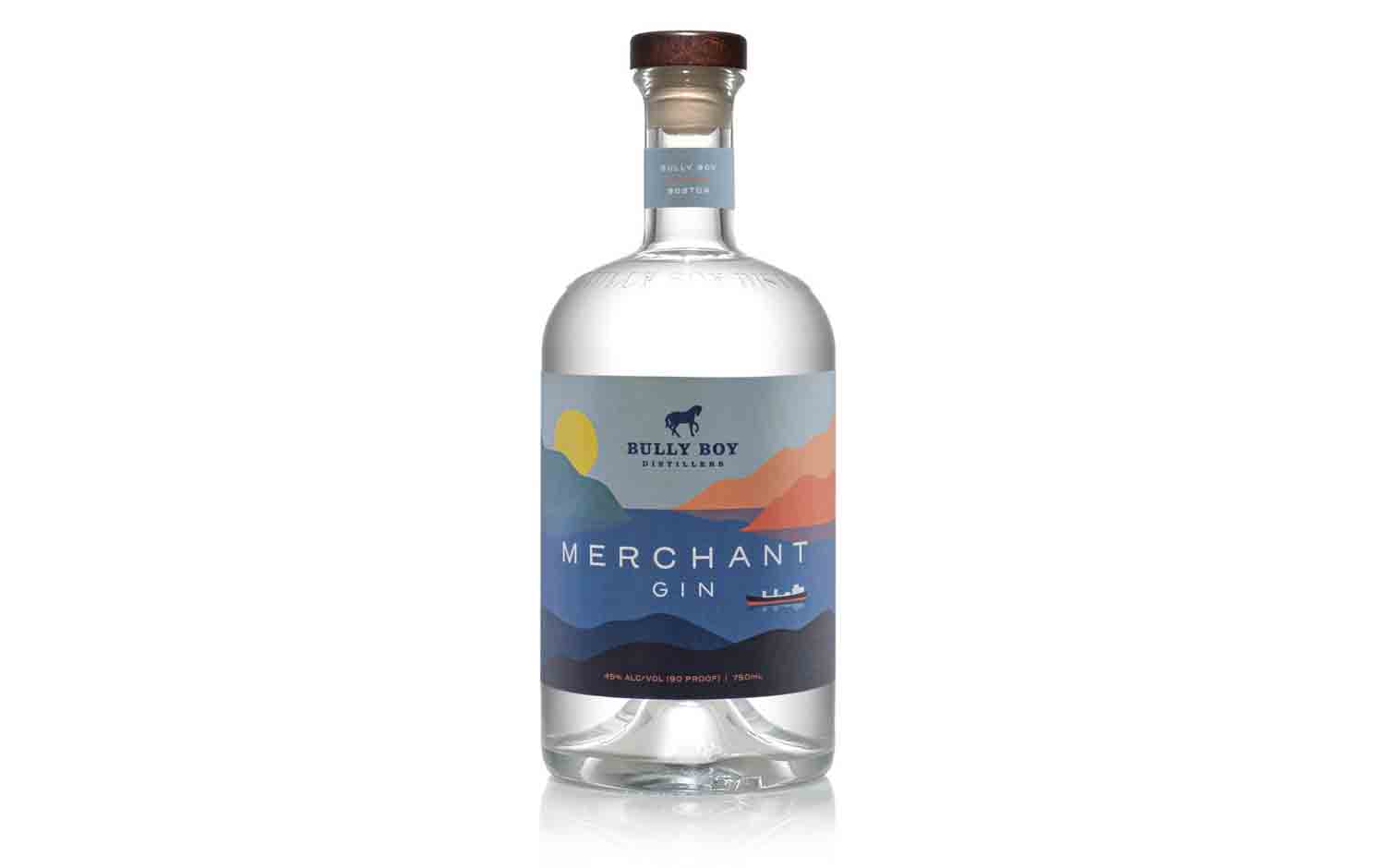
The gin has varied botanicals such as Italian juniper, Egyptian chamomile, Guatemalan cardamom, etc. The result is a delicious, balanced, spicy gin that pairs excellently in things from a gin and tonic to a gimlet or aviation. It has an 80% grain base and 20% honeysuckle cane base which sweetens the final product making it another excellent intro product.
It is bottled at 45% ABV and can be found for about $30 a bottle.
Conclusion
As I’ve suggested in the past, this is neither definitive nor controlling but rather my attempt to share what I find delicious and exciting in the world of gin. Although I love Bombay, I hope these few words get you to explore more exciting options and branch out.
Familiarity is safe but the unknown can be seductive. Give any of these a try or ask your favorite bartender (find one if you don’t have one) and just try things.
Some you won’t like, but some will surprise you. Gin is like whisky: it is so much more than the one or two major brands you see and the flavors are so wild and expansive you’re bound to find one you like.
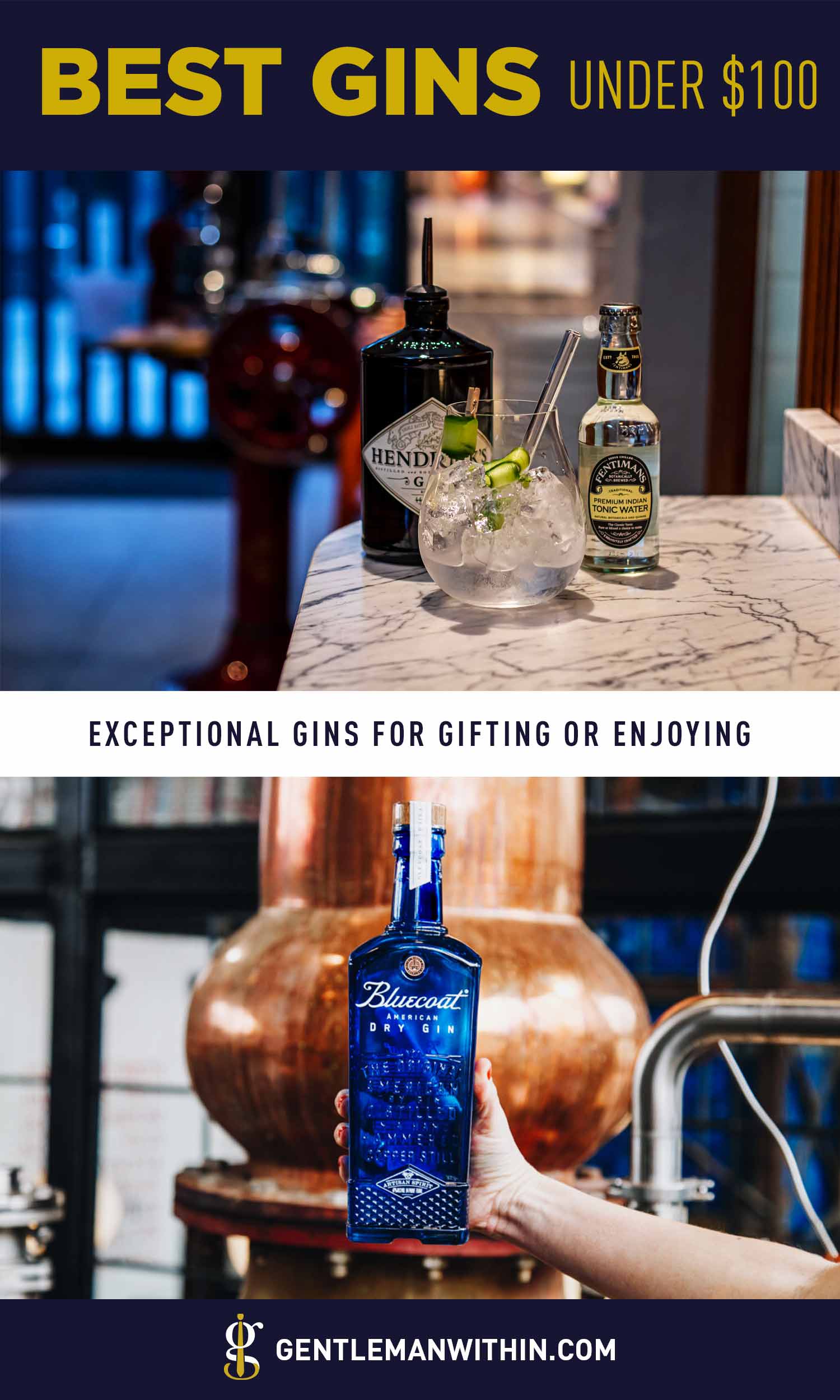
About Elijah

Elijah C. Mills is a native of Indiana, but now resides in Washington, D.C. A lover of all things ethanol and bow ties, you can find him out and about at various D.C. events. He is an active Episcopalian and works as a Parish Administrator at a DC Episcopal church. He’s always happy to meet over a drink and can be easily talked into most social events.
What are some of your favorite Gins?
Let’s continue the discussion over in the Gentlemen Within Private Facebook Community. Looking forward to seeing you in there.






Drop a Line!